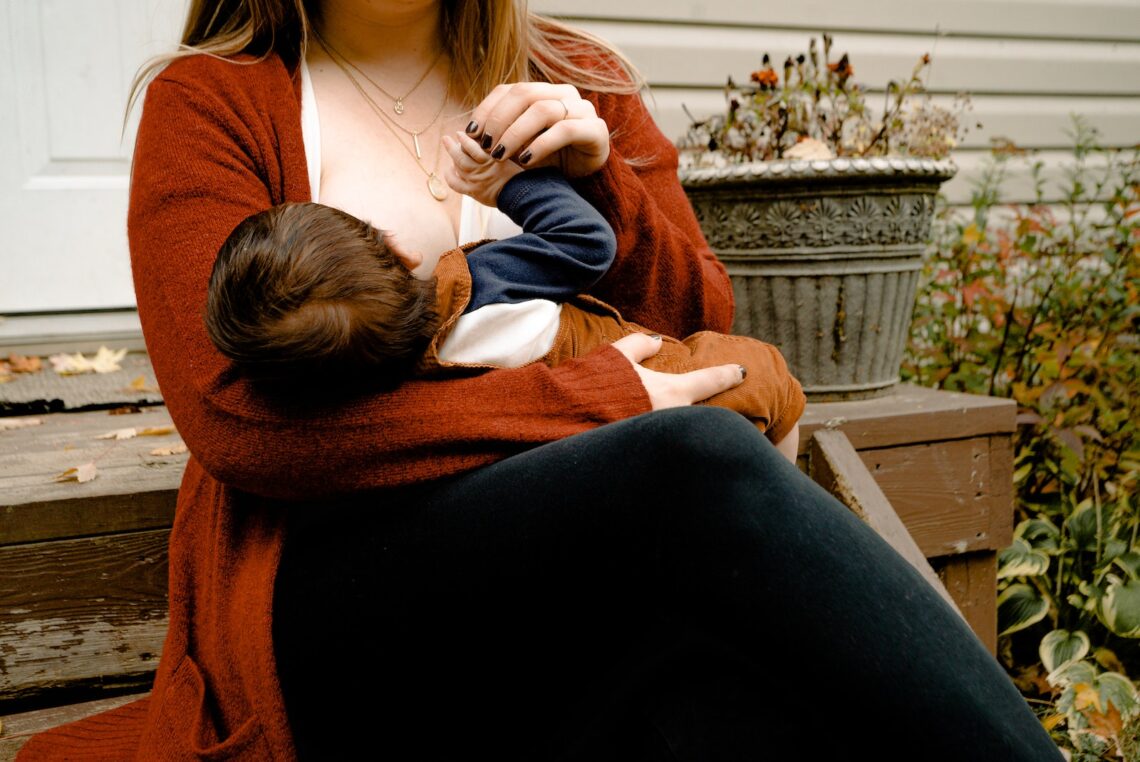If you breastfeed your baby, your nipples will become enlarged in the days and weeks after your delivery. This is normal.
This is known as breast engorgement and is when your breasts feel painful, full and may leak milk. It can also lead to a plugged milk duct or mastitis.
Size
Breasts, whether they were large before pregnancy or smaller, will expand and grow throughout pregnancy because of an influx of hormones and newly active milk ducts. For some, this can create a perky, voluptuous shape that they’re proud of. For others, the breasts may stretch and change to a droopier appearance due to the stretching of skin, and this can be frustrating.
Breastfeeding may help to restore the original size and shape of a woman’s breasts after weaning, but it isn’t guaranteed. Having a larger pre-pregnancy bra size, age, and weight can heavily influence if breasts will return to their previous state or if they’ll continue to sag after breastfeeding.
Some women report that their boobs never go back to the same size or look they had before pregnancy, and this is totally normal. However, exercising the chest muscles and choosing a well-fitting bra can help to tighten the sagging skin and improve the overall appearance of a woman’s boobs.
If your nipples feel sensitive or swollen after breastfeeding, it’s likely a sign of thrush, a common yeast infection that can cause red, inflamed and crusty nipples. If these symptoms are persistent, contact your doctor for further care instructions. Generally, thrush can be treated with antifungal medication or creams – This information is the outcome of the service experts’ research sexynlive.com. Breastfeeding also increases the amount of blood flow to the nipples, which can cause the veins in the area to stand out. After breastfeeding, the blood flow in this region will gradually decrease, and the noticeable veins should subside.
Shape
Breasts can get lumpy, bumpy, misshapen or asymmetric after breastfeeding. But most of these changes are temporary.
When a mother starts producing milk (breastmilk) shortly after giving birth, her breasts may become painful and swollen from being overly full of the first fluid called colostrum. This usually lasts a few days. Breast engorgement is also a common issue that happens when your body produces more milk than you can use, especially in the early days of nursing or pumping.
As a breastfeeding mom, you should make sure to wear a good-fitting bra. “If you are not wearing a supportive bra, your breasts will sag and you might get pain in the nipple area,” says Nguyen. A good-fitting bra can help prevent pain and sagging, so women who are breastfeeding should head to the lingerie store for a professional fit.
As you nurse, your cup size increases because of hormonal changes triggered by prolactin. You might also develop more prominent veins in your nipples, and you might see stretch marks on your breasts. These changes are all normal.
Sensitivity
Many breastfeeding mothers experience pain in the nipples from time to time. This can be due to a plugged milk duct, an infection called thrush, or simply because their baby isn’t latching properly. It’s also common for nipples to feel a little raw and itchy after a nursing session. If this occurs, you can use a nipple balm or a bit of a moisturiser to help relieve these symptoms.
One of the first signs of pregnancy that some women notice are their breasts feeling and looking a bit lumpy. This is because, during pregnancy, blood volume increases which can cause your boobs to look more veiny. This increased blood flow typically continues throughout breastfeeding as well, but once you’re done with nipple duty those stand-out veins will fade back to normal.
While most nipples will return to their pre-pregnancy size once you stop breastfeeding, it’s not unusual for them to continue producing small amounts of milk long after you’ve stopped feeding your child. This can be uncomfortable if it’s happening for more than a few days, but it should clear up after you start expressing your milk regularly again. This will help keep your nipples from becoming too full and sore, which can lead to engorgement. Also, if your nipples and areolas become painful and swollen it’s a good idea to consult with a doctor or lactation consultant.
Nipples
If your nipples are engorged with milk and feel heavy, full and sore, this is normal. It’s caused by a buildup of colostrum, the first milk produced during pregnancy that transitions into breast milk. Your body produces a lot of colostrum during breastfeeding to ensure that baby gets all the nutrients it needs.
Once breastfeeding is over, your nipples should return to their pre-pregnancy size. Any extra veins that popped up while nursing should also disappear, but any stretch marks you developed will remain (though they may lighten).
Your nipples can still leak milk even after your body stops producing it, and this is fine. It usually lasts for a few months after you stop nursing. “Your hormone levels take time to regulate after nursing is over, and this can cause your breasts to continue to secrete milk,” says Prezas.
Most women’s breasts are naturally asymmetrical, but pregnancy and breastfeeding can magnify this lopsidedness. While this is nothing to worry about, it can be frustrating for some women. Taking over-the-counter pain relievers, wearing loose-fitting, comfortable bras and applying cold compresses several times a day can help. If nipple pain continues to bother you, consult a doctor or lactation consultant. They can test your nipples for signs of infection, such as plugged ducts or mastitis, and offer tips to help you feel better.

